#Real-Time Solar Power Monitoring Systems
Explore tagged Tumblr posts
Text
Maximizing Solar Potential: The Advantages of Real-Time Monitoring Systems
The sun’s energy offers a clean and abundant source of power, and India has seen a significant rise in solar energy adoption in recent years. As solar power becomes more integrated into the national grid, optimizing its potential is crucial. This is where real-time monitoring systems come into play, revolutionizing how we manage and maximize solar energy production.
Traditional solar power plants rely on manual inspections and data collection, which can be time-consuming and prone to errors. Real-time monitoring systems, on the other hand, provide a constant stream of data, offering a clear picture of your solar power plant’s performance. These systems, often IoT-based solar power monitoring systems, leverage the power of the Internet of Things (IoT) to collect and transmit data from various sensors installed across the solar panels and inverters.

Here’s how real-time solar power monitoring systems can significantly benefit your solar energy journey:
Enhanced Performance and Efficiency:
Granular Data Analysis: Real-time monitoring provides detailed insights into your system’s performance. You can track power output, voltage, current, and irradiance levels (sunlight intensity) for each panel or string of panels. This granular data allows you to identify underperforming sections and pinpoint potential issues like faulty panels, soiled surfaces, or misaligned trackers.
Proactive Maintenance: By identifying performance dips early on, you can address problems before they escalate into major issues. This proactive approach to maintenance helps prevent costly repairs and downtime, ensuring your solar power plant operates at peak efficiency.
Performance Optimization: Real-time monitoring allows you to compare actual power output with expected output based on historical data and weather forecasts. This enables you to optimize factors like tilt angle and inverter settings to maximize energy production under different weather conditions.
Improved System Reliability and Safety:
Real-Time Fault Detection: Real-time monitoring systems constantly monitor critical parameters like temperature, voltage, and current. This allows for early detection of potential faults or malfunctions within the system, such as overheating or voltage surges. Early intervention can prevent equipment damage and ensure the safety of your solar power plant.
Preventative Maintenance: By identifying potential issues early, you can schedule timely maintenance to address minor problems before they snowball into equipment failures. This preventative approach extends the lifespan of your solar infrastructure and reduces the risk of accidents.
Informed Decision-Making:
Cost Savings: Real-time data empowers you to make informed decisions that can lead to significant cost savings. By identifying and addressing performance issues promptly, you can optimize energy production and minimize grid dependence, potentially reducing electricity bills.
Return on Investment (ROI) Tracking: Monitoring systems allow you to track your plant’s energy production against initial investment costs. This data helps you measure your ROI and assess the financial viability of your solar power plant.
System Expansion Planning: Real-time monitoring data provides valuable insights into your energy consumption patterns. This information can be used to plan future expansions to your solar power plant capacity, ensuring it meets your growing energy needs.
Advanced Features of Real-Time Monitoring Systems:
Modern real-time monitoring systems go beyond basic data collection and offer advanced features that further enhance your solar experience:
Mobile App Accessibility: Many systems offer mobile applications that allow you to access real-time data and system health insights from anywhere. This provides unparalleled convenience and enables you to monitor your solar power plant remotely.
Data Analytics and Reporting: Real-time monitoring systems often come equipped with built-in data analytics tools. These tools can generate comprehensive reports that track performance trends, identify performance bottlenecks, and forecast future energy production.
Alerting Systems: You can configure the system to send alerts via email or SMS for critical events such as sudden performance drops, potential equipment failures, or system downtime. This allows for immediate action to be taken and minimizes potential losses.
Choosing the Right Real-Time Monitoring System:
The Indian market offers a diverse range of IoT solar power monitoring systems. When choosing a system, consider factors such as the size and complexity of your solar power plant, your budget, and the specific features you require. Look for a system that integrates seamlessly with your existing infrastructure and offers reliable data security.
Conclusion:
Real-time monitoring systems are a game-changer for solar power plant management. By providing constant data insights and enabling proactive maintenance, these systems empower you to maximize your solar potential. As India continues to embrace solar energy, real-time monitoring systems will undoubtedly play a vital role in ensuring a clean, efficient, and reliable solar future.
Source: https://ezine-articles.com/maximizing-solar-potential-the-advantages-of-real-time-monitoring-systems/
#iot based solar power monitoring system#iot solar power monitoring system#real-time solar power monitoring systems
0 notes
Text
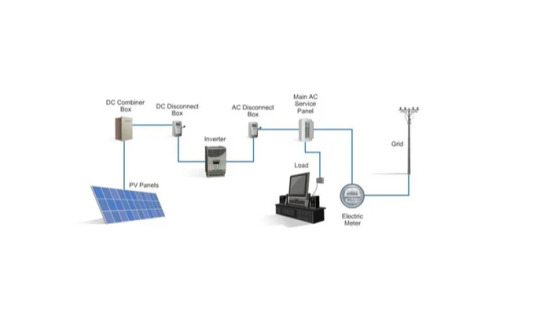
Trust Logics PowerAMR for your solar monitoring needs. Our IoT-based system ensures accurate, real-time data for informed energy management decisions. Visit: https://poweramr.in/poweramr-solar
#Real-Time IoT Solar Monitoring Systems#IoT based Solar Power Monitoring Systems#Real-Time Solar Power Monitoring Systems#IoT Solar Power Monitoring System
0 notes
Text
Innovative Solar Power for Supermarkets: PVB's Bright Future
In the ever-evolving landscape of renewable energy, PVB stands out as a leader in the photovoltaic inverter industry, particularly with their innovative solar power solutions tailored for supermarkets.
Supermarkets are increasingly recognizing the benefits of integrating solar power into their operations, not only to reduce energy costs but also to enhance their commitment to sustainability. PVB's cutting-edge inverters are designed to optimize energy efficiency, ensuring that supermarkets can harness the full potential of solar energy.
With features such as advanced grid management and real-time monitoring, PVB inverters empower supermarket operators to make informed decisions about their energy consumption. This not only leads to significant cost savings but also contributes positively to the environment by reducing carbon footprints.
Moreover, PVB is dedicated to continuous innovation, ensuring that their products remain at the forefront of technology. Their commitment to quality and performance means that supermarkets can rely on PVB inverters for a seamless integration of solar power into their energy systems.
In conclusion, PVB's innovative solar power solutions are paving the way for a brighter, more sustainable future for supermarkets everywhere. Embrace the change and join the solar revolution with PVB!
#real-time monitoring#photovoltaic inverter#solar power#energy systems#sustainability#innovation#renewable energy
0 notes
Text
Switchgear Solutions for Solar and Wind Energy Systems

Why Switchgear Matters in Solar and Wind Systems
Switchgear plays a central role in controlling, isolating, and protecting electrical equipment. In renewable energy applications, it helps:
· Manage power flow from variable energy sources.
· Protect systems from faults or overloads.
· Ensure seamless grid integration and disconnection when needed.
Unlike traditional power plants, solar and wind systems generate intermittent power, requiring switchgear that can handle dynamic loads and frequent switching.
Challenges in Renewable Energy Applications
Here are some of the unique challenges renewable energy systems face — and how they impact switchgear selection:
1. Variable Output
Solar and wind energy production fluctuates based on weather and time of day. This demands switchgear that can:
· Handle frequent load changes.
· Operate reliably under fluctuating voltages and currents.
2. Decentralized Generation
Unlike centralized grids, solar and wind systems are often spread out across multiple locations.
· Modular, compact switchgear is preferred for such installations.
· Smart monitoring becomes critical to manage performance remotely.
3. Harsh Environments
Wind turbines operate at high altitudes, and solar farms are often exposed to heat, dust, or salt.
· Switchgear needs to be rugged, weather-resistant, and have high IP ratings.
· Outdoor switchgear enclosures and temperature management are essential.
Key Features of Switchgear for Solar & Wind
When designing or upgrading renewable energy systems, look for switchgear that offers:
1. Remote Monitoring and Control
Smart switchgear integrated with IoT technology allows operators to track real-time data, detect faults early, and optimize system performance.
2. High Interruption Capacity
Wind and solar systems may experience voltage spikes. Modern switchgear provides high breaking capacities to safely interrupt fault currents.
3. Modular Design
Allows for easy upgrades and maintenance — crucial for scaling renewable installations.
4. Eco-Friendly Design
Look for SF₆-free switchgear that uses clean air or other sustainable alternatives to reduce environmental impact.
5. Hybrid Capabilities
Switchgear that can connect both AC and DC sources is increasingly valuable in mixed-source grids.
LV, MV, and HV Switchgear for Renewables
· Low Voltage (LV) Switchgear: Used in residential or small-scale solar systems. Compact, safe, and cost-effective.
· Medium Voltage (MV) Switchgear: Ideal for commercial and industrial solar/wind applications.
· High Voltage (HV) Switchgear: Essential for utility-scale wind farms or solar plants feeding into the national grid.
Each type requires specific protection, metering, and automation components tailored to its load and system requirements.
Final Thoughts
Switchgear is the backbone of any successful solar or wind energy system. As these technologies become more mainstream, the demand for resilient, intelligent, and environmentally friendly switchgear solutions will continue to rise.
Whether you’re an energy consultant, project developer, or facility manager, choosing the right switchgear today will set the stage for long-term efficiency, safety, and scalability.
8 notes
·
View notes
Text
Spaceway 70 - Pablo
The Marlin heaves out of the darkened dock, whining with unwarmed engines. A simple objective:
- Assess damages, neutralize threats.
I've done it a million times before. Come to think of it,—
Red lights blare outside and the station's distress call is picked up by the radio. I fly around the cylindrical body—perform a systematic scan. How would the incident report be written?
- Upper hull damaged in a hit-and-run bombing; station status unknown.
- Soldier casualties: ...
Soldiers. They never chose to lay down their lives—to fight for an uncaring ruler—not them.
- Assailant(s): Unknown vessel, presumed solitary. Heat signature detected, actively pursuing.
Ambiguous language. Open to litigation. Sarge would be sad.
- Disregard previous entry. Chasing assailant via engine heat; infrared reading with 0.87 certainty. Monitoring radar.
- Radar confirms a small ship. Moving at 75% of own velocity. Distance 2000 mi.
-
-
- 1500.
-
-
- Approaching civilian zone
-
-
- 1000.
-
-
- 500.
-
- 250.
-
- 175.
-
- 100.
- 50.
- 25.
- Contact.
They pull up and to the left, attempting to get above and behind me, though it's too little, too late.
- Assailant neutralized with ballistics. Assumed to have hit engine.
- Upon visual examination, there appears to have been no pilot. Control is either automated or remote. No outstanding radio frequency detected.
Darn...
Out and ahead of me are markers indicating a commercial route. Safe for traders.
A transponder on one of the markers pings my ship. Something about remaining in place, a unit arriving soon. I don't make it a good hundred miles before a squad comes in with weapons hot.
I dodge a few shots and they graze me with a laser. I'm not about to make war with a whole task force.
The Marlin is a ship of esoteric construction. It has a hull constructed for incredibly heavy salvos—granted you have enough sealant [1] aboard. It comes with a cloak [2], more a scrambler than anything, which uses up insane amounts of power, and an EM pulse [3] which likewise drains my batteries. It's a perfect ship for an early retirement [4], as long as my encounters are few and far between.
With the push of a fader I turn my radio into a tool of war, creating a streak of white along their IR imager and making their radar unusable. Similarly, with a press of a button the magnetron pulses on, disabling their steering and warming up their cabins.
- Three combatants neutralized; nonlethal means
Two more pull down and in front, shooting and missing. I pull up and turn around, hoping to hit them with more microwaves.
< -#- VACDETEC V1.4 -#- >
< ALARM >
<HULL BREACH | d.0s>
<HULL BREACH | d.1s>
<HULL BREACH | d.2s>
I begin to sweat as the laser weapon dissipates as heat into my cockpit.
< HULL SEALED >
< SEALANT AT 25% >
I need to leave.
I reach up to grab a solar compass [5] and scribble my heading onto the cockpit glass.
- Taking extratactical measures: Magnetron shielding angle set to 175.8 degrees
< ## Are you sure? Use of EMP with current settings may cause systems to misbehave. ## >
[ YES ]
Navigation goes dark as two more ships behind me lose steering. I launch a wide-range RF jammer [6] and a hot net [7]. I cut my engines and seal the exhaust [8].
This is a special dance they taught us in Academy; " . . . each ship has its own precise limits, though with them come potential," they had us memorize old literature, "that is why you must know yours more intimately than the body of your lover . . . " I positioned one hand over the exhaust control and another over the ignition. Two seconds, three seconds, and
< -#- SHELL -#- >
< ALARM >
<ENGINE OVERHEAT>
The ship rattles as I rocket dead ahead in the direction of home. Another alarm blares on my monitor,
<CHECK ENGINE>
A few milliseconds too late. I hear a faint whisper—a hiss—join the chorus of the Marlin's song. I'm sorry. I'll fix it soon. It'll be ok.
" . . . for each time you take up the helm, you partake in a romance far more real than any other, for no other can see the terror
of a deprivation so terrible, or a death so swift."
[1]: A chemical formulation which undergoes an extremely exothermic reaction when exposed to the vacuum of space. Akin to tire sealant from when vulcanized rubber was used for land vehicles.
[2]: A system consisting of telescoping antennae and an ultra-high amplitude RF generator. Hides a ship's exact location within a much broader, irregular radio signature.
[3]: A high-powered magnetron capable of producing strong microwaves with multiple miles of range. Temporarily scrambles navigation systems, causing affected ships to veer off-course.
[4]: I can't keep doing this
[5]: An indicator which points in the direction of the closest star, when properly calibrated. Detects the unique products of nuclear fusion.
[6]: Akin to the cloak, a disposable projectile which blanks out vast swathes of a ship's radio imager.
[7]: A large, mechanized retroreflector which concentrates heat from all directions, and shoots it back at the viewer, making infrared imaging of a ship nearly impossible.
[8]: In reference to a mechanism which seals the exhaust vents of the Marlin. This turns the entirety of the engine tract into a bomb. A stupid idea if held closed for more than a few seconds.
39 notes
·
View notes
Text
Chiba decided to apply in 2022 because it wanted to improve disaster resilience and achieve decarbonization at the same time, says Hidetaka Ishii, a city official in charge of decarbonization promotion.
Energy self-sufficiency became an urgent matter for Chiba after it experienced extensive power outages due to two typhoons and a heavy rainstorm in September and October 2019, he says.
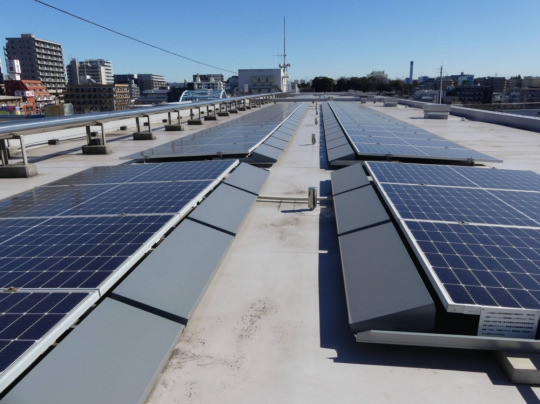
Rooftop solar panels on Soga Elementary School in the city of Chiba | TOMOKO OTAKE
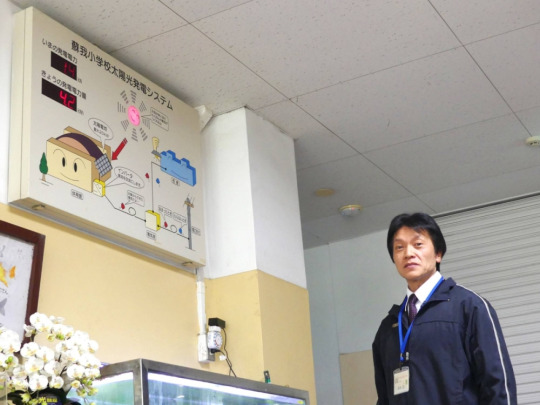
Soga Elementary School Principal Shinobu Yasui stands next to a monitor partially showing the amount of solar power generated on a real-time basis. A more advanced monitoring system is used now that all solar panels have been installed. | TOMOKO OTAKE
The storms knocked over hundreds of utility polls in the city, leaving 94,600 households without power for up to 20 days amid extreme heat. They also caused 98 landslides, inundated 124 homes and killed three people.
“We hadn’t taken noteworthy measures (on energy) before these disasters,” Ishii says. “But by January the following year, we came up with a comprehensive antidisaster policy package that put energy resilience at the fore.”

Solar panels installed over rice fields in the city of Chiba | COURTESY OF CHIBA MUNICIPAL GOVERNMENT
Over three years from April 2020, with help from separate funding from the ministry, the city has installed solar panels on the roofs of 128 schools and 12 community centers. These places were given priority as they serve as evacuation shelters in times of disaster.
Chiba’s bid to become a decarbonization leader is an extension of this drive. The city, the first municipality in Chiba Prefecture to be selected for the program, has established three decarbonization areas, aiming to serve as a model for other municipalities.
#solarpunk#solar punk#community#japan#solar power#energy resilience#disaster preparedness#renewable energy
5 notes
·
View notes
Text
Polludrone
Polludrone is a Continuous Ambient Air Quality Monitoring System (CAAQMS). It is capable of monitoring various environmental parameters related to Air Quality, Noise, Odour, Meteorology, and Radiation. Polludrone measures the particulate matter and gaseous concentrations in the ambient air in real-time. Using external probes, it can also monitor other auxiliary parameters like traffic, disaster, and weather. Polludrone is an ideal choice for real-time monitoring applications such as Industries, Smart Cities, Airports, Construction, Seaports, Campuses, Schools, Highways, Tunnels, and Roadside monitoring. It is the perfect ambient air quality monitoring system to understand a premise's environmental health.
Product Features:
Patented Technology: Utilizes innovative e-breathing technology for higher data accuracy.
Retrofit Design: Plug-and-play design for ease of implementation.
Compact: Lightweight and compact system that can be easily installed on poles or walls.
Internal Storage: Internal data storage capacity of up to 8 GB or 90 days of data.
On-device Calibration: On-site device calibration capability using built-in calibration software.
Identity and Configuration: Geo-tagging for accurate location (latitude and longitude) of the device.
Tamper-Proof: IP 66 grade certified secure system to avoid tampering, malfunction, or sabotage.
Over-the-Air Update: Automatically upgradeable from a central server without the need for an onsite visit.
Network Agnostic: Supports a wide range of connectivity options, including GSM, GPRS, Wi-Fi, LoRa, NBIoT, Ethernet, Modbus, Relay, and Satellite.
Real-Time Data: Continuous monitoring with real-time data transfer at configurable intervals.
Weather Resistant: Durable IP 66 enclosure designed to withstand extreme weather conditions.
Fully Solar Powered: 100% solar-powered system, ideal for off-grid locations.
Key Benefits:
Robust and Rugged: Designed with a durable enclosure to withstand extreme climatic conditions.
Secure Cloud Platform: A secure platform for visualizing and analyzing data, with easy API integration for immediate action.
Accurate Data: Provides real-time, accurate readings to detect concentrations in ambient air.
Easy to Install: Effortless installation with versatile mounting options.
Polludrone Usecases:
Industrial Fenceline: Monitoring pollution at the industry fenceline ensures compliance with policies and safety regulations, and helps monitor air quality levels.
Smart City and Campuses: Pollution monitoring in smart cities and campuses provides authorities with actionable insights for pollution control and enhances citizen welfare.
Roads, Highways, and Tunnels: Pollution monitoring in roads and tunnels supports the creation of mitigation action plans to control vehicular emissions.
Airports: Pollution and noise monitoring at taxiways and hangars helps analyze the impact on travelers and surrounding neighborhoods. Visit www.technovalue.in for more info.

#AirQualityMonitoring#CAAQMS#EnvironmentalMonitoring#SmartCitySolutions#RealTimeData#PollutionControl#IoTDevice
2 notes
·
View notes
Text
With a flash, you returned to reality, where the battle had stalled. You saw a bit of battle damage on CONSTANTINE and KUKULKAN- it seems like they sustained a little bit of damage as your interaction with MUSASHI pushed a bit past 'stunning' and turned into a full-on contract. Still, it could be worse.
There was a form standing before you and your Servants. A swordswoman, who smiled amicably.

MUSASHI: "Shinmen Musashi-no-Kami Fujiwara-no-Harunobu, the Flower at the Apex of Heaven, is at your service!"

CONSTANTINE: "A new Servant, and 'Musashi', huh... I guess that means that our Masters were successful. Well, nice to meet you. You may call me 'Rider', we can divulge True Names when we're in… more appropriate company."
PRETENDER: "I get it, I get it. Ah, but a new ally? And a woman claiming to be 'Shinmen Musashi' to boot…"
KUKULKAN: "I'm… uh, Foreigner? Invader? I think there's already a Foreigner, so I'm sticking with Invader! Nice to meet you, Musashi!"

MUSASHI: "Hmm... Rider's pretty handsome, and Invader is cute when she isn't as robot-y... not bad, not bad at all, Masters..."
After listening to MUSASHI murmur something... a bit odd, you realized that you could feel a magical connection between you and her. It seems as if a Contract was established! Monitoring your Command Spells, it seemed as if two of KUKULKAN's Command Spells were transferred over to MUSASHI. It seems like creating multiple contracts without the assistance of some higher power within the system means that you'll have to share. Unless the contract was established before, like with RIDER or potentially AVENGER, and then you'd simply regain the proper amount of Command Spells.
Regardless, of the specifics, this was a success! Because...
[ MUSASHI joined the party! ]

PRETENDER: "Well, as much as I'd love to have a few hours for introductions and teambuilding, there is a Beast currently terrorizing the city, and her main body should now be unimpeded with Miss Musashi's taming."

KUKULKAN: "Oh, right! Draco! Right! Let's go, everyone!"
The rest of the walk was easy. Now with MUSASHI out of the way, at least in terms of her being an active threat against your group, the rest of the path was surprisingly clear. You wandered deeper and deeper into the catacombs, the air growing sticky and dense with vile mana.
You could hear MUSASHI, on instinct, unsheathing her blades and readying them for a battle. You noted that CONSTANTINE had his own hand on the hilt of his blade, but a faint surge of prana restrained his movements as he tried to pull it out, the magic of the Command Spell compelling him against his better instincts.
CONSTANTINE put a hand up, stopping the group.

CONSTANTINE: "We're close. I can sense her- and the terrain is beginning to shift. Which means we'd best strategize on how to handle her."
Your small troupe stopped, looking between one another. This was a conversation that was a long time coming, frankly. CONSTANTINE spoke up first- his voice clear and imperious.

CONSTANTINE: "That Beast is the Whore of Babylon made manifest. The Beast of Revelations as foretold by the apostle Saint John. She is a woman of wicked intent, set on destroying civilization. I understand why that may seem appealing due to our current situation, but all you'll be doing is feeding a monster! Allying with that Beast- becoming a Master of the Beast- will make us the true enemies of the Solar Cell, not just the Lair Servants. Humanity itself will reason for your very destruction. I say we slice her throat as soon as we see the whites of her eyes."
MUSASHI sighed, looking between her new traveling companions.
MUSASHI: "I've fought a lot of real jerks, but my blade hasn't sliced apart any Beasts before. But… I've also known the type of idealist who thinks that they can tame a Beast anyways, so as much as my swords are rattling, I can't lunge one way or the other. I do get what Rider means, though. Sticking the Beast in some other Class may lessen the rest of the World's insistence on killing them, but will make them less… uh, powerful? And that's only if you're able to do it…"
As MUSASHI's comment elicited an eyebrow raise from CONSTANTINE, KUKULKAN spoke up, a bit hesitantly.
KUKULKAN: "I don't know a ton about Beasts and Humanity or the World… I'm still learning about how most aspects of Human History work, but I think we need to take a chance with Draco. I don't want to decide someone is rotten or not just before meeting them, and she'll be good for this fight. I'm sure there's some good there too! If everyone hates us for the choices we make, that's okay, right? We'll be a team! You decided that you'd be enemies of this world for the sake of saving it."
The discussion was cut short as a voice pierced through the air--
???: "Stop sitting and chittering in the wings like rats, and fully reveal yourselves on my stage. To hold up a performance is poor manners, you know?"

As your Servants hesitantly reached the amphitheater, the sky seemed to be blotted out by the dark shape that moved, slowly and intentionally. You felt eyes boring down on you, a presence and weight that held a unique sense of 'gravity'.
Looking up, you saw the massive shadow of ALTER-EGO… or at least a Servant that greatly resembled her. Her body was clad head to toe in black leather, her eyes having lost their joy and luster in exchange for a bitter darkness. An innocent being, once calmed by the melody of 'Twinkle, Twinkle, Little Star', now twisted into something devoid of that purity.

DRACO: "Welcome, o' Former Masters of mine, to my great stage! Oh, and do not mind my new toy. My mud has corroded her mind, Altered her Spirit Origin, and to be surrounded by a woman as beautiful as the sakura trees of the East is only an apt beginning of an imperial court. She is one of my Seven Heads made manifest, now. I've taken to calling her 'Sakura Superbia'."

KUKULKAN: "Wow... Draco is a pretty fast worker, isn't she...? Even I can tell that Servant is super dangerous, luckily, I'm sure our Masters are already thinking of a top-rate contingency plan if things go south... right?"
Staring up with an inscrutable expression, PRETENDER tutted.

PRETENDER: "Alter-Ego... You're quite the problematic Servant, aren't you? Always landing in some inconvenient situation. Avenger and Foreigner will be very upset if we don't fix this..."

"SAKURA SUPERBIA": "Pretender, Pretender, Pretender... you were always tiny like an insect, but now I feel like I could pin you and those pretty little wings to a board. Or should I just squish you instead?"

CONSTANTINE: "How lovely. So... that settles what happened to Alter-Ego, but what of Assassin?" MUSASHI: "You don't think they're controlled like that big girl?"
With a shake of his head, CONSTANTINE continued to look around the area.
CONSTANTINE: "Maybe, but... I'd like to be optimistic and say they escaped..."
Looking down below ALTER-EGO, in the shadow of the Massive Servant, you saw DRACO. She didn't seem... weak, particularly, but she had seemed stronger. It seemed like the lack of a proper contract was putting some toll on her body.
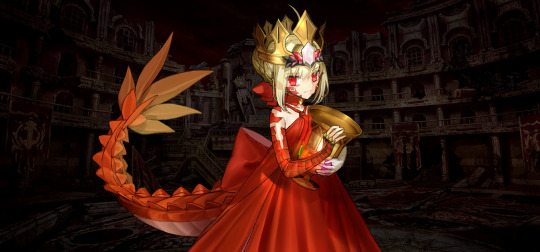
DRACO: "The sword is still in your possession, yes? Good. Deliver my sword, and I shall grant you wisdom of the Solar Cell. Give me tribute, and I shall consider renewing our contract. But behold, with my assistance, you gain an even mightier ally. How magnanimous am I. Normally I would have you kneel, but as you have no true body, my former Masters, I cannot ask you to bow your heads and beg for forgiveness. However, the Rider…"
You saw her mouth twist into a bitter, amused grin. CONSTANTINE shuddered though he did not look away, his eyes cold and piercing.

CONSTANTINE: "Oh, please speak, Whore of Babylon. Give me ample cause to wrench myself free of the Command Spell's curse and loose your head from your vile shoulders."
This seemed like an expected outcome. You told him he couldn't act out and defy your instructions- which at this point cycled around 'wait and see' regarding DRACO. That didn't mean he had to be nice about it.

DRACO: "How brave. Then yes, if you make him beg instead, that will be a far more amusing sight. And have him lop off his own head as well, then I will consider that apt sacrifice and have your debts repaid in full. After all, he disrespected my imperium, and dared to draw his blade against me. Such a rabid dog cannot be allowed to live, lest he bite the hand that feeds."

DRACO: "However, I am nothing but not fair. I'll give you time to discuss. I hope you make the right decision. After all, any resistance, and I'll bring down the might of 'Sakura Superbia' on you."
It seemed as if you were far enough away at the moment to discuss without being eavesdropped on, though close enough that you could call and speak to DRACO via the 'Endless Whispers' code cast regardless.
26 notes
·
View notes
Text
Building Safer Cities: How Advanced Switchgear Is Powering the Future
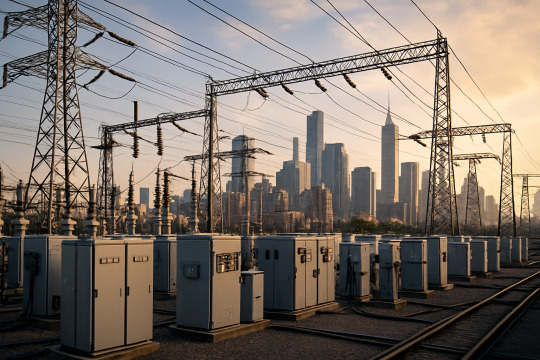
Switchgear refers to the combination of electrical disconnect switches, fuses, and circuit breakers used to control, protect, and isolate electrical equipment. In simple words: it’s the shield that protects the power network from overloads, faults, and blackouts.
Without high-quality switchgear, cities would face:
· Frequent power failures
· Increased risk of electrical fires
· Equipment damage
· Unsafe environments for residents and businesses
In today’s urban landscape, switchgear isn’t just an accessory — it’s a critical lifeline for energy security and public safety.
How Advanced Switchgear is Shaping Safer Cities
Thanks to major technological advancements, switchgear is no longer static and reactive. Modern switchgear systems are smart, dynamic, and preventative. Here’s how they are transforming cities:
1. Real-Time Monitoring and Fault Detection
Smart switchgear comes equipped with IoT sensors and digital monitoring systems that detect faults in real time. Instead of waiting for a catastrophic failure, the system identifies weak points early — enabling quick, preventive maintenance.
Impact: Reduced blackouts, faster repair times, safer living and working environments.
2. Automated Shutdowns During Emergencies
In critical events like fires, short circuits, or system overloads, automated switchgear can instantly isolate the affected section. This targeted shutdown prevents the spread of danger and keeps the rest of the city powered.
👉 Impact: Enhanced public safety, minimized risk of widespread outages.
3. Supporting Renewable Energy Integration
As cities shift toward renewable energy sources (solar, wind, hydro), modern switchgear is designed to handle these variable inputs seamlessly. It balances load fluctuations and ensures grid stability, even when energy production varies hour by hour.
👉 Impact: Cleaner cities without sacrificing reliability.
4. Enhanced Energy Efficiency
Advanced switchgear minimizes energy losses during transmission and distribution. With features like optimized load management and energy analytics, cities can operate their power grids more sustainably and economically.
👉 Impact: Lower energy costs, greener urban spaces.
Why Upgrading Switchgear is Essential for the Cities of Tomorrow
The future city will be:
· More populated
· More digitalized
· More energy-demanding
Legacy power systems cannot keep up with this growth. Old switchgear is more vulnerable to faults, inefficiency, and even cyberattacks. Modern, advanced switchgear not only provides higher protection but also future-proofs cities against evolving challenges.
Investing in advanced switchgear means investing in:
· Public safety
· Economic stability
· Environmental responsibility
· Smart infrastructure development
Conclusion: Powering a Safer, Smarter Future
As we envision smarter, greener, and safer cities, we must pay attention to the systems that keep the lights on — and keep people safe. Advanced switchgear stands at the front line of this transformation, quietly ensuring that progress doesn’t come at the cost of safety.
Whether you’re an urban planner, an electrical engineer, or a business owner — prioritizing the right switchgear solutions is key to building cities ready for the challenges of tomorrow.
Looking for world-class switchgear products and accessories? Al Taqwa Electrical and Building Materials offers cutting-edge solutions trusted by industries across the world.
#electrical#electrical equipment#electrical supplies#building#building materials#oman#muscat#switchgear
3 notes
·
View notes
Text
The Rise of Smart Homes in Abu Dhabi: Is It Worth the Investment?

🌐 Visit: www.purehome-re.ae
As Abu Dhabi continues to evolve as a future-forward, tech-savvy city, one of the most significant shifts in the real estate market is the growing demand for smart homes. But what exactly are smart homes—and why are they becoming such an attractive option for both buyers and investors in 2025?
What Are Smart Homes?
Smart homes are residential properties equipped with advanced automation systems that control lighting, temperature, security, appliances, and more. These features are designed to offer convenience, energy efficiency, and enhanced security, creating a seamless and responsive living environment.
In Abu Dhabi, this movement is not just a trend—it’s part of a larger government vision to build AI-powered, sustainable communities that cater to modern living standards.
Key Benefits of Investing in Smart Homes in Abu Dhabi
1. Energy Efficiency & Cost Savings Smart homes use AI-enabled systems to manage energy consumption intelligently. Features like smart lighting, thermostats, and solar integrations help reduce utility costs, making them more appealing for long-term living and investment.
2. Advanced Security Integrated security systems—such as facial recognition, remote monitoring, and automated emergency alerts—provide peace of mind for residents and families. These features are particularly in demand among expats relocating to the UAE.
3. Sustainability & Water Management With smart irrigation systems and leak-detection technology, these homes support water conservation efforts, aligning with Abu Dhabi’s broader sustainability goals.
4. Health & Wellness Features Some smart residences now come equipped with indoor air quality monitors, automated air purifiers, and even health-tracking integrations—further enhancing the lifestyle benefits.
Why Now Is the Time to Invest
Abu Dhabi’s real estate trends for 2025 point to a surge in demand for smart, eco-conscious living spaces. Government support for smart city initiatives, the rise of communities like Al Reem Island, Yas Island, and Masdar City, and an increase in remote work flexibility have made smart homes a sound investment choice.
According to recent reports, buyers are actively searching for:
Smart villas in Yas Island
Energy-efficient homes in Masdar City
Luxury apartments with automation in Al Reem Island
These preferences show that smart homes aren’t just futuristic—they’re the present.
Final Thoughts
Smart homes in Abu Dhabi are reshaping the way people think about real estate. Whether you're an investor looking for high ROI or a resident seeking convenience, sustainability, and security, smart living offers a compelling proposition.
Ready to Invest in a Smarter Future?
At Pure Home Real Estate, we help you find innovative, tech-integrated properties tailored to your lifestyle or investment goals. 📩 Contact us today to explore the best smart home listings across Abu Dhabi. 📞 Call: +971 2 446 6775 🌐 Visit: www.purehome-re.aes
#abudhabi#real estate#uae#dubai#property management#real estate investing#investment#properties#smart home
2 notes
·
View notes
Text

The Vision of a Rebalanced Earth: A Call for Change 🌍💫
This society is founded on the principles of equity, sustainability, and harmony, with a bold goal: undo the harm caused by industrialism, capitalism, and exploitation of nature within 100 years. It integrates technology, human creativity, and ecological restoration to create a world where humanity thrives as part of the planet, not apart from it.
Core Philosophy and Framework
Earth Pledge:
"We acknowledge the harm inflicted on the Earth, its creatures, and its peoples through greed, ignorance, and oppression. We repent for this harm and pledge to heal, restore, and protect the balance of all life."
This global commitment serves as the moral compass, aligning all people toward shared responsibility for the planet and one another.
Core Principles:
Hope and Compassion: Life is sacred, and relationships with others and the planet are cherished. 🌱💞
Ecological Responsibility: Restoring nature is humanity's highest priority. 🌿🌍
Technological Liberation: Technology serves to heal and empower, not exploit. 🤖🌟
Equity and Justice: All beings have fair access to resources and opportunities. ⚖️
Forgiveness and Renewal: Reconciliation with past harm is essential for healing. 🕊️
Collective Happiness: True joy is shared, amplified through community and unity. 🌸
Governance:
Tribal communities govern themselves autonomously, forming a global network of cooperation. A decentralized Global Guidance Council ensures equitable resource distribution, helping resolve disputes and fostering unity. 🌍🤝
Trade, Commerce, and Economy
The Harmony Market:
A unique hybrid system combining artisan guilds, resource-sharing hubs, and bartering. 🌾💰
Essentials (food, shelter, water) are universally accessible via Community Hubs.
Niche Guilds specialize in goods like tech, art, and prosthetics.
Festival Markets offer large-scale barter and cultural exchange.
Anti-Classism Measures:
No one owns resources or accumulates wealth.
Contributions are valued equally, with mentorship ensuring guild accessibility for all.
Surpluses are shared during Redistribution Day, reinforcing unity.
Cultural Integration:
Rituals and festivals transform commerce into a joyful and meaningful practice. 🌸🎉
Transportation and AI Integration
Power-Generating Roads:
Roads powered by solar panels and piezoelectric systems, providing renewable energy to communities. ⚡🌞
Free Autonomous Transport:
Shared vehicles (shuttles, cargo transporters) eliminate private ownership, ensuring universal mobility. 🚗🌐
AI-Integrated Roads:
AI manages energy optimization, traffic flow, and wildlife monitoring, ensuring seamless coordination and efficient resource management. 🤖🚦
Tribal Communication Stations:
Hubs that connect communities, share real-time ecological data, and facilitate resource sharing. 🗣️🌍
The 100-Year Transition Plan 📅
Phase 1: Decade of Awakening (Years 1–10)
Launch educational campaigns about the Earth Pledge and principles.
Begin rewilding efforts and build prototypes of eco-integrated communities.
Phase 2: Restoration and Redistribution (Years 11–50)
Dismantle industrial systems and replace with sustainable alternatives.
Expand Community Hubs and guild networks for equitable access.
Phase 3: Harmony (Years 51–100)
Achieve full tribal governance, with AI ensuring equitable resource management.
Transition cities into eco-integrated hubs, indistinguishable from the natural world.
Cultural and Spiritual Integration 🕊️✨
Guiding Religion:
A belief system centered on forgiveness, compassion, and collective happiness.
Sacred festivals honor nature, transformation, and human unity. 🌿🌏
Spiritual Practices:
Meditation, community storytelling, and rituals connect people to one another and to the Earth. ��
Empowerment Plan:
A seven-step process encourages individuals to reflect, grow, and inspire while healing past harms.
What Makes This Vision Unique?
Anti-Classist by Design:
No one holds more power or resources than others. Systems ensure transparency, equity, and communal stewardship. ✊💡
Harmony with Nature:
Human systems are designed to regenerate the Earth. Roads, homes, and hubs blend seamlessly into rewilded landscapes. 🌳🏡
Technology as a Tool for Liberation:
AI and renewable energy systems empower human creativity, equity, and ecological health, not greed. ⚡🌿
Unified Through Culture:
Festivals, rituals, and storytelling celebrate both individuality and collective identity. 👐🌍
Next Steps
1. Shareable Materials:
Help us spread the word! Download flyers, videos, and websites to inspire others to join the movement. ✨
2. Prototype Communities:
Support the building of small-scale eco-tribes that embody these principles, integrating Harmony Markets and AI systems. 🏡🌍
3. Global Movement:
Join or organize gatherings and festivals to share the Earth Pledge, grow the Harmony Market, and build connections worldwide. 🌐
Join the Tribe of Hope Now 🙌🌍
What are your thoughts? Drop a comment, ask questions, or share feedback! Let's make this vision a reality, one step at a time. Together, we can rebalance the Earth. 🌱
💬 What excites you most about this vision? 💬 How do you see yourself contributing to a rebalanced world? 💬 What challenges do you think we need to address first?
#Rebalanced#sustainability#spiritual awakening#philosophy#mindfulness#spirituality#harmony#equityforall#EcoJustice#FutureNow#ecotech#globalunity#green movement#Rebalanced Earth
4 notes
·
View notes
Text
The Role of Energy Management Systems in India's Growth
India is a nation on the rise. Its booming economy and ever-growing population are driving a surge in energy demand. To meet this demand while ensuring sustainability and economic viability, India is focusing on efficient energy management. This is where energy management systems (EMS) come into play, acting as a powerful tool for propelling India's growth trajectory.
What are Energy Management Systems (EMS)?
An energy management system (EMS) is a software-based solution that tracks, analyses, and optimizes energy consumption across various sectors. It acts as a central hub, collecting data from different sources like power meters, sensors, and building automation systems. This data is then analyzed to identify areas of energy waste and potential for improvement.
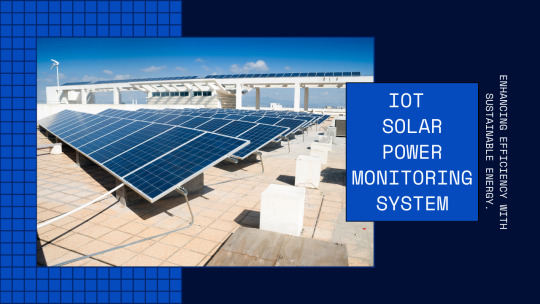
Benefits of Energy Management Systems for India
1. Cost Reduction:
One of the most significant benefits of EMS for India is cost reduction. By identifying energy inefficiencies and optimizing consumption, businesses and industries can significantly lower their energy bills. This translates to increased profit margins and improved competitiveness in the global market.
2. Improved Sustainability:
India is committed to reducing its carbon footprint. EMS plays a crucial role in this by enabling the integration of renewable energy sources like solar and wind power. The system can monitor and manage the grid to ensure optimal utilization of these clean energy sources, reducing reliance on fossil fuels and greenhouse gas emissions.
3. Enhanced Efficiency:
EMS provides real-time data and insights into energy consumption patterns. This allows for proactive management and optimization of energy use across various sectors. For example, industries can identify and address equipment malfunctions that lead to energy waste. Buildings can adjust lighting and HVAC systems based on occupancy and weather conditions. This holistic approach leads to significant improvements in overall energy efficiency.
4. Demand-Side Management:
Energy management systems in India are crucial for demand-side management (DSM) initiatives. DSM focuses on shifting energy consumption patterns to reduce peak demand on the grid. EMS can identify peak consumption periods and encourage consumers and businesses to adjust usage patterns through automated controls or time-based pricing schemes. This helps to reduce the strain on the power grid, leading to improved reliability and reduced infrastructure investment needs.
5. Data-Driven Decision Making:
EMS provides a wealth of data that can be used to make informed decisions about energy procurement, infrastructure upgrades, and future energy strategies. Businesses and organizations can analyze historical data and identify trends to predict future energy needs and optimize resource allocation. This data-driven approach leads to better investment decisions and long-term energy security.
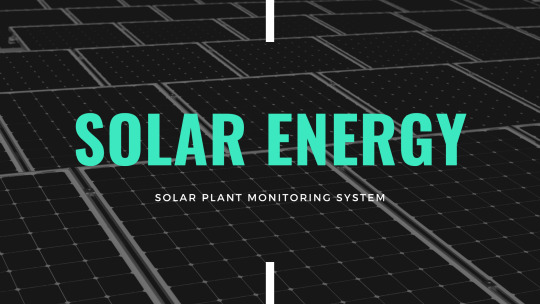
The Rise of Energy Management Systems in India
The energy management system (EMS) industry in India is experiencing rapid growth. The government is actively promoting the adoption of EMS through various initiatives, such as tax benefits and subsidies for implementing energy-efficient technologies. Additionally, the increasing awareness of energy conservation and rising energy costs are driving the demand for EMS solutions across various sectors, including:
Manufacturing: Industrial facilities can use EMS to optimize production processes, monitor equipment performance, and identify opportunities for energy savings.
Buildings: Building management systems integrated with EMS can optimize lighting, HVAC usage, and other energy-consuming systems based on occupancy and weather conditions.
Power Grid Management: EMS plays a vital role in managing the power grid by optimizing power flow, anticipating peak demand periods, and integrating renewable energy sources.
Agriculture: Energy management solutions can help farmers optimize irrigation systems, monitor and control greenhouse environments, and utilize renewable energy sources for agricultural operations.
The Road Ahead
As India continues on its growth trajectory, energy management systems (EMS) will play a critical role in ensuring sustainable and cost-effective energy consumption. By leveraging the power of data analytics, automation, and integration with renewable energy sources, EMS will continue to revolutionize India's energy landscape, paving the way for a more secure, efficient, and sustainable future.
Looking for an energy management solution for your business in India?
Research and connect with leading energy management system providers in India. By implementing an EMS, you can contribute to India's sustainable development goals while enhancing your business's energy efficiency and profitability.
Source: https://solarminitoringsystem.blogspot.com/2024/05/the-role-of-energy-management-systems.html
#iot solar power monitoring system#real-time solar power monitoring systems#iot based solar power monitoring system
0 notes
Text
What are the Latest Trends in Building Construction in Dubai?

The construction industry in Dubai has long been a symbol of innovation, luxury, and futuristic design. With its rapid development and architectural marvels, the emirate has consistently set the bar for what is possible in the construction sector. Over the years, the building construction industry in Dubai has evolved significantly, and new trends continue to emerge, reshaping the landscape of urban development. From sustainability to technology integration, Dubai is at the forefront of the latest building construction trends. In this article, we will explore the key trends influencing the building construction sector in Dubai.
1. Sustainable and Green Building Practices
As the global emphasis on sustainability continues to grow, Dubai is also embracing green building practices. This trend is driven by the increasing need for energy-efficient buildings and eco-friendly solutions that minimize the environmental footprint of construction projects. Developers and building construction company in Dubai are now focusing on incorporating sustainable materials, energy-saving technologies, and eco-friendly designs in their projects.
One of the key features of sustainable buildings in Dubai is the use of solar panels. Solar energy is becoming a popular choice for powering buildings, helping to reduce energy consumption and carbon emissions. In addition to this, there is an increased use of recycled materials such as reclaimed wood, steel, and glass, which not only helps to preserve natural resources but also contributes to the reduction of construction waste.
Moreover, Dubai's commitment to sustainability is evident in the numerous green certifications, such as the Dubai Green Building Regulations, which encourage developers to integrate environmentally friendly technologies into their buildings. The use of smart building systems that optimize energy consumption and reduce water usage is also a growing trend. The shift towards green building practices is expected to continue as Dubai aims to reduce its carbon footprint and enhance the quality of life for its residents.
2. Smart and Connected Buildings
The concept of smart buildings has gained significant traction in Dubai over the past few years. With advancements in technology, there is a growing demand for buildings that are equipped with intelligent systems capable of enhancing comfort, convenience, and security. Smart buildings in Dubai are being designed with integrated technologies that allow for real-time monitoring and management of building systems such as lighting, HVAC (heating, ventilation, and air conditioning), security, and energy consumption.
The integration of Internet of Things (IoT) devices into building infrastructure is another trend that is revolutionizing the construction industry in Dubai. These devices can collect data on building performance, detect anomalies, and provide insights into how the building can be optimized for energy efficiency and occupant comfort. For instance, smart thermostats can automatically adjust the temperature based on occupancy, while intelligent lighting systems can dim or brighten according to the time of day or the presence of people.
Building automation systems (BAS) are becoming a crucial part of construction projects, allowing building managers to remotely control and monitor systems, reducing operational costs and improving efficiency. These smart technologies not only enhance the living and working experience but also provide a competitive edge for property developers and investors who are looking to attract tech-savvy tenants.
3. Modular and Prefabricated Construction
Modular and prefabricated construction is gaining popularity in Dubai as a way to speed up the construction process and reduce costs. Prefabricated construction involves assembling parts of a building off-site in a controlled environment before transporting and assembling them at the construction site. This method allows for greater precision and quality control, as the components are built in a factory setting rather than at the construction site.
One of the main benefits of modular and prefabricated construction is the significant reduction in construction time. In Dubai, where there is a constant demand for rapid development, this approach helps to meet deadlines and reduces the overall time required to complete projects. Additionally, it minimizes the disruption to the surrounding environment, as fewer materials are stored and handled on-site.
Another advantage of this construction method is the potential for cost savings. Since much of the work is completed off-site, labor costs are lower, and there is less waste generated. Furthermore, modular and prefabricated construction allows for the creation of more standardized and repeatable designs, which is ideal for large-scale developments such as residential communities or commercial buildings.
4. Use of Advanced Building Materials
Dubai’s construction industry is also witnessing a shift toward the use of advanced building materials that offer improved durability, sustainability, and aesthetic appeal. These materials include high-performance concrete, glass, and steel, as well as newer innovations such as self-healing concrete, transparent aluminum, and carbon fiber.
Self-healing concrete, for example, is a breakthrough material that has the ability to repair its cracks over time. This material can significantly extend the lifespan of buildings and reduce maintenance costs, making it an attractive option for developers in Dubai. Transparent aluminum, on the other hand, offers a unique combination of strength and transparency, making it an ideal material for modern facades and windows.
The use of carbon fiber in construction is also on the rise, particularly in the reinforcement of concrete structures. Carbon fiber is lightweight yet incredibly strong, making it an ideal material for improving the structural integrity of buildings without adding significant weight. As the demand for innovative, high-performance materials continues to grow, building construction companies in Dubai are exploring new ways to incorporate these materials into their projects.
5. Vertical Construction and Skyscrapers
As land space becomes increasingly limited in Dubai, vertical construction continues to be a key trend. Skyscrapers and high-rise buildings are a hallmark of Dubai’s skyline, and this trend is not slowing down. The demand for tall buildings in Dubai is driven by the need to accommodate a growing population and provide commercial and residential spaces in the limited available land area.
Dubai has already set several records in the construction of skyscrapers, including the iconic Burj Khalifa, the tallest building in the world. Vertical construction allows for the development of more compact, space-efficient buildings that maximize the use of available land. In addition, skyscrapers are designed to be multi-purpose, combining residential, commercial, and leisure spaces within the same structure.
In recent years, there has been a push towards even taller and more innovative designs. Architects and developers are constantly pushing the boundaries of what is possible in vertical construction, incorporating advanced technologies and engineering solutions to create more sustainable and energy-efficient high-rise buildings.
6. Luxury and High-End Residential Developments
Dubai has long been known for its luxury real estate market, and this trend shows no signs of slowing down. In recent years, there has been an increasing demand for high-end villas and residential properties that offer exceptional levels of comfort, style, and exclusivity. Developers are focusing on creating luxurious living spaces that cater to the needs and desires of affluent residents.
Villa construction companies in Abu Dhabi and Dubai are capitalizing on this demand by designing and building opulent villas with state-of-the-art amenities, such as private pools, gyms, and expansive gardens. These properties are often located in prime locations, such as beachfront areas or exclusive gated communities, providing residents with the ultimate in privacy and luxury.
The rise of luxury residential developments is also influencing the broader construction market in Dubai. Developers are incorporating cutting-edge designs, high-end finishes, and the latest technologies to ensure that their properties stand out in a competitive market. With a growing number of wealthy investors and residents, the demand for top-tier residential developments is expected to continue.
7. Focus on Mixed-Use Developments
Mixed-use developments are another major trend shaping the construction industry in Dubai. These projects combine residential, commercial, retail, and recreational spaces into a single, integrated development. The goal of mixed-use developments is to create self-sufficient communities where residents can live, work, and play without having to leave the development.
The rise of mixed-use developments in Dubai is driven by the need for more efficient land use and the desire to create vibrant, walkable communities. These developments often feature high-rise buildings, modern amenities, and extensive green spaces, providing a balanced lifestyle for residents and workers alike. Mixed-use developments also offer a sustainable solution to urban growth by reducing the need for long commutes and promoting a more connected, community-oriented way of life.
Conclusion
The construction industry in Dubai is undergoing significant transformations, with new trends and innovations reshaping the way buildings are designed and constructed. From sustainable building practices to the use of cutting-edge technologies, the emirate continues to set the standard for modern construction. As the demand for luxury, smart, and sustainable buildings continues to grow, building construction companies in Dubai will need to adapt and embrace these trends to stay competitive and meet the evolving needs of the market.
With the increasing popularity of modular and prefabricated construction, advanced materials, and vertical construction, Dubai’s skyline will continue to evolve, providing residents and visitors with an ever-changing and dynamic urban landscape. The future of construction in Dubai looks bright, and the trends we are witnessing today are only the beginning of what promises to be an exciting era for the industry.
#Building Contracting Company In Dubai#Building Construction Company In Dubai#General Contracting Company In Abu Dhabi#Best Construction Companies In Abu Dhabi#Contracting Companies In Al Ain#Construction Companies In Al Ain#Interior Design Fit Out Company Dubai#Interior Fit Out Contracting Company Dubai#Fit Out Contracting Company In Abu Dhabi#Villa Construction Companies In Abu Dhabi
2 notes
·
View notes
Text
Switchgear for Solar and Wind Projects in Bahrain: What You Need to Know
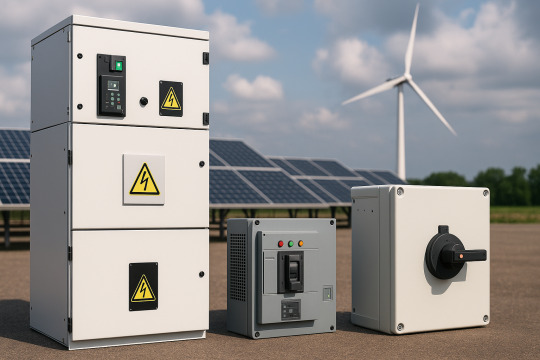
As Bahrain intensifies its commitment to renewable energy, solar and wind power projects are gaining momentum across the Kingdom. The nation’s Vision 2030 emphasizes sustainable growth, and this includes an ambitious target of generating 10% of electricity from renewable sources by 2035. As developers and investors gear up for this energy transition, one component plays a critical role in ensuring system safety, reliability, and efficiency — switchgear.
In this article, we explore why switchgear is crucial in solar and wind power systems, the specific requirements in Bahrain, and how to choose the right solution for your renewable energy project.
What is Switchgear and Why Does it Matter?
Switchgear is a general term covering a wide range of electrical devices used to isolate, protect, and control electrical circuits. It includes circuit breakers, fuses, relays, disconnectors, and load break switches.
In renewable energy systems, switchgear ensures:
· Safe disconnection of faulty or overloaded circuits
· Protection against overcurrent, short-circuit, and earth faults
· Efficient control and monitoring of power flow
· Coordination with grid and off-grid systems
Renewable Energy Growth in Bahrain
Bahrain’s sunny climate and strong coastal winds make it an ideal location for solar PV and wind power installations. Recent government initiatives — such as the Net Metering Scheme, Tendered Renewable Projects, and Green Building Regulations — are creating opportunities for both utility-scale and distributed renewable energy systems.
However, environmental factors such as high temperatures, humidity, and dust pose challenges for electrical equipment, particularly in outdoor solar and wind sites. This makes the right choice of switchgear even more important.
Key Switchgear Considerations for Solar Projects
In photovoltaic (PV) installations, switchgear must be compatible with DC (direct current) as well as AC (alternating current) systems. Here are specific points to consider:
1. DC Switchgear for PV Arrays
· DC Disconnectors: Isolate individual PV strings for maintenance or emergency shutdowns.
· DC Fuses and Circuit Breakers: Protect cables and components from over currents.
· String Combiner Boxes: Integrate multiple PV strings and incorporate protective devices.
2. AC Switchgear for Inverter Output
· Low-Voltage Circuit Breakers (AC): Used between inverters and transformers or grid connection points.
· Load Break Switches: Offer safe disconnection under load conditions.
· Metering and Monitoring Units: Allow real-time tracking of power output and faults.
3. Environmental Protection
· Use switchgear with IP65-rated enclosures to protect against dust and water ingress.
· UV-resistant materials are vital for long-term durability under the Bahraini sun.
Switchgear in Wind Energy Systems
Wind energy systems involve varying voltage levels and require robust protection due to fluctuating wind speeds and mechanical loading. Key switchgear elements include:
1. Medium Voltage Switchgear
· Used for interconnection between wind turbines and step-up transformers.
· SF6 or Vacuum Circuit Breakers: Provide arc quenching and insulation under high voltage.
2. High-Speed Protection
· Wind turbines are sensitive to voltage dips and transients. Fast-acting relays and breakers prevent equipment damage.
· Reactive power control and grid fault detection are integrated into switchgear assemblies.
3. Compact, Modular Designs
· Space constraints inside turbine towers or nacelles demand compact switchgear solutions with modular layouts.
Bahrain-Specific Compliance and Standards
To ensure your switchgear meets local utility and regulatory requirements, consider the following:
· EWA (Electricity & Water Authority) Requirements: All grid-connected systems must comply with EWA’s interconnection standards, including protection schemes and disconnection devices.
· IEC Standards: Switchgear must comply with relevant IEC 60947 (low-voltage switchgear) and IEC 62271 (high-voltage switchgear) guidelines.
· Thermal Rating and Ambient Temperature: Switchgear should be rated for continuous operation at temperatures up to 50°C, common in Bahraini summers.
Choosing the Right Switchgear Partner
A successful renewable energy project hinges on choosing a reliable switchgear partner. Look for:
· Local experience in Bahraini environmental and regulatory conditions
· Customizable solutions for both rooftop and utility-scale systems
· After-sales support including spares, maintenance, and system upgrades
· Smart switchgear with digital monitoring for preventive maintenance and remote control
Future Trends in Switchgear for Renewables
As solar and wind systems grow more advanced, so does switchgear technology. Key trends include:
· Digital Switchgear: Real-time monitoring, predictive maintenance, and IoT integration
· Arc-Resistant Designs: Enhanced safety for personnel in substations
· Eco-Friendly Alternatives to SF6: Adoption of green gases and air-insulated switchgear
· Hybrid AC/DC Systems: With growing battery storage and hybrid plants, switchgear must handle both current types seamlessly
Conclusion
Whether you’re planning a rooftop PV installation or a wind farm in Bahrain, your switchgear solution must be robust, compliant, and tailored to the region’s unique challenges. By choosing the right switchgear system, you ensure operational efficiency, regulatory compliance, and long-term safety.
If you’re looking for expert advice or need help selecting switchgear for your solar or wind project in Bahrain, our team is here to help. Contact us today for tailored solutions that power your progress sustainably.
#electrical engineers#electrical supplies#switchgear#electrical equipment#911 abc#bahrain25#arcane#artists on tumblr#batman#cats of tumblr
3 notes
·
View notes
Text
The Future of Low Voltage Switchgear: What’s Next?
Low voltage switchgear plays a critical role in power distribution, ensuring safe and efficient operation across industries such as manufacturing, commercial buildings, healthcare, and renewable energy. With rapid technological advancements, the future of low voltage switchgear is evolving to meet the demands of digitalization, energy efficiency, and sustainability.

Digitalization and Smart Switchgear:
Digital technology is in fact one of the greatest revolutions of low voltage switchgear. Smart switchgear has the capability of IoT (Internet of Things) for real-time monitoring, predictive maintenance, and remote control.
Smart Low Voltage Switchgear: Market Trends and Analysis:
Real-time Data Monitoring: Sensors that conduct data collection and analysis of the voltage, current, temperature, and health of devices.
Predictive Maintenance: With a year of analysing AI-powered data, predicting failures before they happen to reduce downtime and in turn maintenance costs.
Cloud Connectivity: Operators have access to switchgear data from any location, improving remote monitoring and control.
Data Processing Power: AI integration in automation systems speeds up data processing, allowing for faster decisions.
Energy Efficiency and Sustainability:
With rising awareness around sustainability across the globe, manufacturers of low voltage switchgear are designing energy efficient solutions to minimize carbon footprints.
Sustainable Innovations in Low Voltage Switchgear:
Eco-Friendly Insulation Materials: Manufacturers are substituting SF6 (a powerful greenhouse gas) with eco-friendly options.
Low Power Consumption Designs: Designs lose energy less, leading to superior efficiency.
Integration of Renewable Energy: Switchgear is being optimized to manage both solar and wind power, ensuring that the grid runs smoothly.
Recyclable Components: Many more switchgear systems utilize recyclable materials when they reach the end of their lifecycle.
Safer and More Reliable:
Safety remains a top priority in electrical distribution systems. Future low voltage switchgear will incorporate advanced protection mechanisms to minimize electrical hazards and enhance reliability.
Upcoming Safety Enhancements:
Arc Fault Detection Systems (AFDS): These systems detect and suppress like arcs before they harm.
Self-Healing Systems: AI-based switchgear can automatically redirect electricity in the event of failures, avoiding outages.
Touch-Proof Designs: Designs that are insulated and enclosed to avoid accidental electric shock.
Remote Operation and Diagnostics: This minimizes the extent of physical manual inspections resulting in operator safety.
Modular and Compact Designs: Switchgear is getting increasingly modular and compact, as industries call for more flexible and space-saving solutions.
Features of Modular Low Voltage Switchgear:
Scalability: Switchgear can be modified or scaled up or down to meet businesses’ needs, while maintaining system efficiency.
Reduced Installation Time: Pre-configured modules simplify the process of installation, resulting in less labor costs.
The positioned components for simple replacements and upgrades.
The Rise of Solid-State Switchgear:
Industrial low voltage switchgear are mostly mechanical-latch based circuit breakers but the future lies in solid-state low voltage switchgear using semiconductor based switching technology.
Advantages of Solid-State Switchgear:
Speedy Switching: Solid-state systems work on micro seconds, making fault response time low.
Zero Mechanical Wear & Tear − Moving parts are absent, so switchgear has a longer life and better reliability.
Silent Operation: No sound that comes with a conventional electromechanical breaker
Low Maintenance: It is cost-effective owing to lower failures and servicing.
Integration with Smart Grids:
It plays a vital role in the function of smart grid infrastructure as it helps in the distribution of energy and load balancing in a seamless manner.
The Impact of Smart Grids on Low Voltage Switchgear:
Real-time Load Management: Switchgear will do real-time Load Management based on the requirement.
Self-Healing Networks: When a fault occurs, the system will redirect electricity to unaffected areas.
Cybersecurity: With the growing digitalization, manufacturers will adopt robust cybersecurity measures to prevent cyber threats.
AI and Machine Learning in the Healthcare Sector:
With the world’s transition to advanced technology, AI-powered switchgear will be the new ‘normal’ providing more automation and intelligence to power distribution.
Use of AI in Low Voltage Switchgear:
Anomaly detection: AI can find abnormal power consumption and recommend remedial measures.
Energy Forecasting — Machine learning algorithms will be used to forecast energy consumption trends, helping businesses optimize their energy consumption.
Adaptive Systems: AI will maintain optimum settings that increase performance and lifespan.
Conclusion
The future of low voltage switchgear is digital, efficient and green. Thanks to IoT, AI, solid-state technology and smart grids, these advancements will transform power distribution into a safer, smarter and more reliable system.
Adoption of Next Gen switchgear is crucial for modern enterprise to act proactively for cost efficiency and sustainability in energy usage with next gen technologies to leave the competition behind in the market.
6 notes
·
View notes
Text
Costa Rica Is Saving Forest Ecosystems by Listening to Them - by Geraldine Castro | WIRED - SCIENCE | 25th/02/2025

Monitoring Noises in Eco-Systems Reveals Their Health, Allowing Researchers to Monitor Bio-Diversity Changes, Detect Threats & Asess the Effectiveness of Conservation Strategies.
Photograph: Charlie Fayers/Getty Images
Monica Retamosa was in the middle of changing the batteries of a tape recorder when she heard a bellbird for the first time. Standing on a forest floor, she looked up into the trees, scanning for the source of its metallic and powerful sound, searching for the bird for half an hour to no avail. The bellbird sings from the treetops where it is visible to its peers but invisible to those below. Still, Retamosa smiled: She cares for ecosystems in Costa Rica’s AmistOsa Biological Corridor by listening to them.
In nature, living things use sound for almost everything. They make calls to attract mates, communicate identities, warn of dangers, guide the way, and help in hunting or defense. For decades, researchers have tracked species with recorders in hand, and still do, though increasingly are using remote recording devices too. The study of the sounds organisms make is known as bioacoustics. Retamosa has been doing this work for 10 years. Using bio-acoustic recordings, studies have shown that some birds shout loudly to make themselves heard in cities and that sea turtle hatchlings communicate from the nest to coordinate their hatching. And when bioacoustics is combined with other sounds—those made by humans, as well as the natural sounds of the landscape, such as the crashing of waves in the sea—it is possible to interpret deeper ecological meaning. It becomes possible to monitor changes in biodiversity, detect threats, and measure the effectiveness of conservation strategies. This wider analysis of sound is known as eco-acoustics—and it is exactly the work underway here in Costa Rica.

A three-wattled bellbird (Procnias tricarunculatus) in Costa Rica. Photograph: Juan Carlos Vindas/Getty Images
The development of automated recordings revolutionized bioacoustics and ecoacoustics. Now, research groups can hang sensors that record snippets of the day for months at a time without interfering with wildlife. Retamosa likes this strategy because it’s non-invasive to animals, makes it easier to have ears in large areas and hard-to-reach places, and occasionally helps discover mysterious species.
Although she prefers to monitor ecosystems from a distance, Retamosa still has to go deep into the forest to set up recorders. Visits to the field are fascinating, but never a Sunday stroll. She has hiked miles through mud and branches, along with her colleagues Jimmy Barrantes and Randall Jiménez. They have gone up and down endless slopes. Once, she fell and fractured her ribs. But the work doesn’t end with the installation: they have to go back to change batteries and memory cards. In other countries, they use solar panels and the internet to receive real-time data; in the dark, humid rainforests of Costa Rica, it’s still done by hand.

Acoustic-monitoring fieldwork in Costa Rica. Photograph: Courtesy of Jimmy Barrantes & Randall Jiménez.
That’s what Retamosa was doing when she heard the bellbird. That recording forms part of a project to track the movement and distribution of these birds, which migrate between different altitudes in the region. Their presence could be a functional indicator of the state of the AmistOsa Biological Corridor, which connects La Amistad International Park, on the border with Panama, with other reserves in southern Costa Rica.
The biological corridor was shaped by the passage of wildlife that emerged following the 1990 Forestry Law, which protected wilderness areas and encouraged reforestation on farms through payments for environmental services. In 2010, it was officially mapped. Today it runs through indigenous territories and crosses the country’s largest wetland. Across the Costa Rica there are now 53 corridors, covering 38 percent of its territory.
The project data will help the committee in charge of Costa Rica’s biodiversity and natural resources make decisions. “The idea is to make a monitoring protocol, linking the government, the communities, and us as academia, providing support for analysis and interpretation,” Retamosa says.

A Limón giant glass frog in the rain in Braulio Carillo National Park in Costa Rica. Photograph: Christopher Jimenez Nature Photo/Getty Images
Recorders hung in the wild capture many terabytes of data, so listening to every recording is not feasible. With an eye toward making it a cost-efficient strategy, researchers have developed acoustic indices: mathematical formulas to interpret ecosystem traits from the recorded sounds. “They can reflect the acoustic energy of a place, activity, or frequency diversity,” Retamosa explains. When she started in this field, there were only eight acoustic indices. Now there are more than 80.
The discipline is advancing so rapidly that the scope of these indices is currently being debated. In some of her early research, Retamosa found that certain acoustic measurements show variations between tropical and temperate regions. One of the best known, acoustic complexity—the degree of variation and intricate structure of bioacoustic sound—has been used as a descriptor of bird diversity in temperate environments. However, in tropical areas, different investigations have shown that it does not reflect species diversity, but rather the level of acoustic activity; that is, instead of indicating the presence of multiple species, it seems to show the intense vocalization of one or a few birds.
Careful analysis of these indices can be used to reveal the health of the forest. In a report with Jimmy Barrantes, Retamosa outlines that measuring acoustic entropy—the variation of sound intensity across time and audio frequencies—and acoustic diversity helped them to classify the state of disturbance of some sites, while those of acoustic activity and energy did not. “You can use the indices for a first exploration of the site, to do studies over time, looking for specific changes associated with human disturbances and work with key species,” she explains.
Listening for the Impacts of Tourism
Every region has its own environmental concerns. In Costa Rica, tourism has grown dramatically: between 1984 and 1989, international arrivals increased 37 percent, from 273,900 to 375,900 visitors. But since 1990, the pace has skyrocketed: last year the country received 2.6 million tourists. This boom poses sustainability challenges. To address them, the International Institute for Conservation and Wildlife Management team analyzes sounds inside and outside protected areas. One of its tools is an index that measures the ratio between biological sounds and human-made noises.

The acoustic quality of the landscape must be monitored to conserve the country’s ecotourism. Photograph: Jordan Siemens/Getty Images
In recent years, automated acoustic detection, using artificial intelligence and machine learning, has revolutionized species identification. Previously, advanced programming skills were required to use AI, but with the advent of accessible interface models, it’s becoming more popular. Exoacoustics is increasingly focused on developing more accurate models for classifying sounds.
And it’s becoming possible to pick out individual species in the soundscape using these tools. In a study of farms conducted as part of the Bosque Vivo project, run by Costa Rica’s National Forest Financing Fund, the research team found that Hylopezus perspicillatus, a bird species sensitive to landscape disturbance, was only present in the control sites of Corcovado National Park and in the forests of the best-conserved farms.
In Guanacaste, Retamosa is also working on a long-term monitoring protocol to evaluate how ecosystems and biodiversity are responding to climate variability. In other countries, similar projects are recording sound baselines in sites with minimal human intervention that, in the future, could be compared with up-to-date recordings to detect changes. Although storing all these records is costly, Retamosa believes that they’ll form an invaluable historical archive, which one day can be returned to when technology allows further analysis.
This story originally appeared on WIRED en Español and has been translated from Spanish.

2 notes
·
View notes